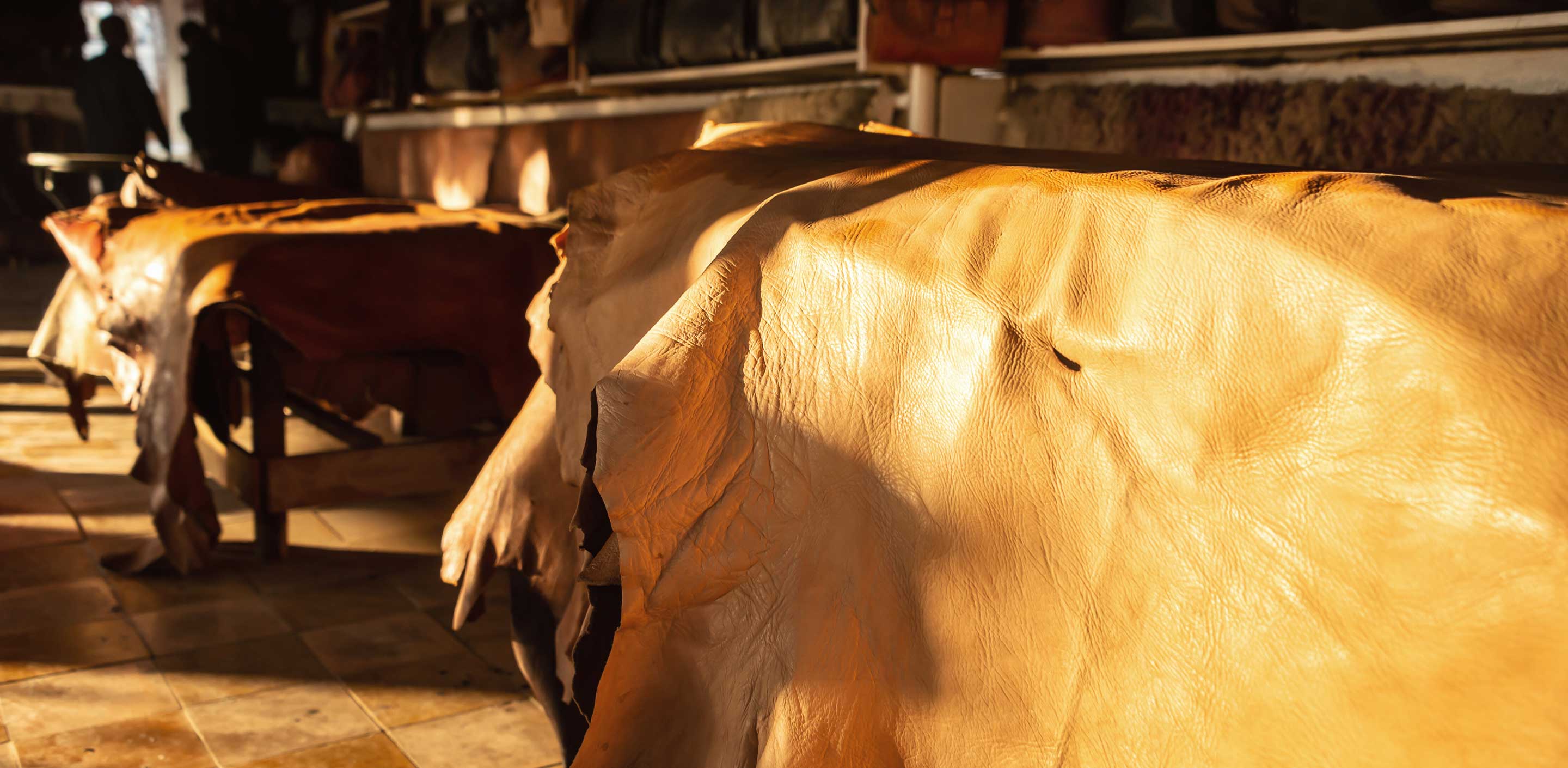Vegetable Tanned Leather: A Timeless Craft of Nature's Elegance

The manufacture of leather has a long and illustrious history, and one of the best examples of its creativity and heritage is vegetable-tanned leather. This kind of leather is a great work of art.
This article is the beginning of a trip that will take you through the enthralling history, the painstaking manufacturing process, the techniques for identification, the one-of-a-kind traits and characteristics, the many uses, and the vital care and maintenance practices of vegetable-tanned leather.
Prepare to immerse yourself in the fascinating world of vegetable-tanned leather, whether you are a fan of classic materials, a heritage specialist, or just fascinated by the world of premium leather. Vegetable-tanned leather has a rich history that dates back centuries.
History and Legacy:
The history of tanning leather using vegetable products may be traced all the way back to ancient times. This age-old trade may be traced back to ancient civilizations when early tanners found that the natural tannins inherent in plant materials could change raw skins into resilient and pliable leather.
Today, this craft is still practiced all over the world. This discovery completely altered the process of producing leather, and ever since then, people have revered the technique.
Leather that had been vegetable-tanned came to be associated with excellence, and it was used for a variety of purposes, including the saddles of cowboys, the armor of knights, and the pages of beautiful books.
Craftsmanship, observance of tradition, and a profound appreciation for the bounties of nature are all integral parts of its heritage.
How Is It Made?
The creation of vegetable-tanned leather is a systematic and labor-intensive process that respects nature's elegance:
Selection of Hides:
The process begins with carefully selecting hides, often from cattle, that have minimal imperfections and preserve the natural grain.
Tanning:
Vegetable tanning involves immersing the hides in a tannin-rich solution derived from oak, chestnut, and hemlock plants. The hides soak in this solution for weeks, allowing the tannins to penetrate and bind with the collagen fibers.
Drying and Staking:
After tanning, the hides are gently dried and then "staked," a process that softens the leather by stretching and breaking it.
Finishing:
Vegetable-tanned leather is often finished with natural oils or waxes to enhance its appearance and provide protection.
Quality Control:
Each piece of vegetable-tanned leather undergoes meticulous quality control to ensure it meets the highest standards of craftsmanship.

How to Identify Vegetable-Tanned Leather?
Recognizing genuine vegetable-tanned leather requires a discerning eye:
Natural Grain:
Vegetable-tanned leather retains the natural grain patterns of the hide, showcasing irregularities and unique markings.
Earthy Aroma:
Genuine vegetable-tanned leather often has a subtle, earthy aroma due to the natural tanning process.
Aging Gracefully:
Over time, vegetable-tanned leather develops a rich patina, deepening in color and gaining character with use and exposure to the elements.
Suppleness:
While it starts firm, vegetable-tanned leather becomes increasingly supple with use, molding to its owner's touch.
Characteristics and Qualities:
Vegetable-tanned leather boasts several exceptional characteristics:
Natural Beauty:
It preserves the natural grain and markings of the hide, resulting in a uniquely beautiful product.
Durability:
Vegetable-tanned leather is known for its durability, making it ideal for long-lasting leather goods.
Environmental Sustainability:
The tanning process uses natural tannins from plants, making it an environmentally friendly choice.
Customizability:
Vegetable-tanned leather readily accepts dyes and can be customized with various colors and finishes.
What's So Great About Vegetable-Tanned Leather:
The greatness of vegetable-tanned leather lies in its timeless appeal and its harmony with nature:
Timeless Beauty:
Vegetable-tanned leather ages gracefully, developing a rich patina that tells the story of its journey.
Eco-Friendly:
It stands as a sustainable choice, with its tannins sourced from renewable plant matter.
Versatility:
Vegetable-tanned leather finds its place in an array of products, from belts and wallets to artisanal leathercrafts and saddlery.
Uses:
Vegetable-tanned leather's versatility extends to various applications:
Leathercraft:
Artisans and leathercrafters use vegetable-tanned leather to create bespoke items such as belts, wallets, bags, and accessories.
Footwear:
High-quality shoes and boot uppers are crafted from vegetable-tanned leather for comfort and durability.
Saddlery:
The equestrian world cherishes vegetable-tanned leather for its durability and suppleness, used for saddles, bridles, and other tack.
Bookbinding:
Fine bookbinding often features vegetable-tanned leather covers, as it takes well to tooling and decorative techniques.
Care and Maintenance:
To ensure that your vegetable-tanned leather items age gracefully, consider the following care and maintenance tips:
Regular Cleaning:
Use a damp, soft cloth to wipe away dust and dirt gently. Avoid harsh chemicals or excessive moisture.
Conditioning:
Apply a leather conditioner specifically designed for vegetable-tanned leather to maintain its suppleness and luster. Follow the product's instructions carefully.
Protection:
Consider using leather protectants or waxes to guard against water and stains. Test any product on a small, inconspicuous area first to ensure it doesn't affect the leather's appearance.
Storage:
When not in use, store your vegetable-tanned leather items in a cool, dry place, away from direct sunlight and extreme temperatures.
Rotation:
If you have multiple vegetable-tanned leather items, rotate their use to prevent excessive wear on a single piece.
Other Things to Note:
As we draw the curtain on this exploration of vegetable-tanned leather, it's evident that this remarkable material transcends the ordinary. It's not just about leather; it's a timeless saga of elegance and craftsmanship that has thrived for centuries. Amidst modern life's frenetic pace, vegetable-tanned leather is a gentle reminder of the enduring value of tradition, quality, and the beauty that emerges when humans collaborate with nature.
Vegetable-tanned leather is not merely a material; it embodies heritage and reverence for the environment. Its ability to age gracefully, revealing a rich patina that narrates the story of its journey, is a living testament to its enduring allure.
This material's natural beauty, durability, and harmonious connection with nature make it more than just a choice—it's a statement of values and a testament to the timeless. As we conclude this journey, we recognize that vegetable-tanned leather is not just about luxury; it's about legacy. These items, lovingly crafted and cared for, become more than possessions; they become custodians of tradition, connecting generations through the appreciation of natural beauty and skilled craftsmanship.
In the world of mass production, vegetable-tanned leather stands as a symbol of authenticity, bridging the past and the present and promising a future where craftsmanship and sustainability coexist harmoniously.
Final Words:
In conclusion, vegetable-tanned leather is more than simply a material; it represents the beauty of nature, workmanship, and tradition. Its past, which is steeped in tradition dating back centuries, continues to be a monument to the evergreen attraction of quality and sustainability.
Vegetable-tanned leather reminds us that the key to genuine beauty is learning to appreciate the flaws and individual qualities that come with the use of natural materials as they mature gently over time.
Items crafted from leather that has been vegetable-tanned may become beloved heirlooms if treated with the appropriate amount of care and respect. In this way, the heritage of skilled workmanship can be passed down from generation to generation.


